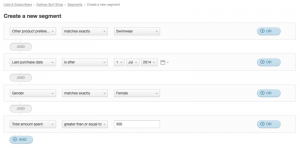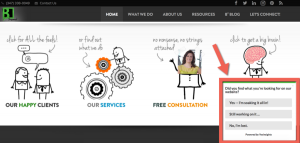
We’re in It Together: Relationships Will Shape Talent Acquisition in 2016
As we kick off 2016, it’s only natural that we devote much of the first quarter to concentrating on the staffing industry trends that will shape the rest of the year. And if there’s one unifying theme, according to LinkedIn, it’s an emphasis on relationships. “This year’s report,” LinkedIn asserts, “shows a common denominator between the rising trends: relationships.” Innovative and superior sourcing techniques underlie the top needs driving businesses today. People, along with the knowledge and skills they possess, have become the most instrumental assets of nearly every company in operation.
Despite the technological achievements that are helping to overcome hiring challenges in an era of skills shortages, the impact of personalization, interaction and real engagement can’t be underestimated. For that reason, MSPs and their staffing partners will become more essential than ever. The relationships they nurture, combined with the tools they use to do so, will set the course for 2016 and beyond.
A New World of Competition in the Quest for Talent
Candidates, particularly those with STEM skills, are not only in demand, they’re in the driver’s seat when it comes to choosing employers. Ian Siegel, co-founder and CEO at ZipRecruiter, succinctly summed up the competitive recruitment situation in a recent Workforce Magazine article: “A database engineer in San Francisco is courted by recruiters every single day. That person will never look for a job again for the rest of their career, jobs will go to them. There’s too much interest.”
Competition for talent in 2016 will be fierce. The rigors of diminishing time and resources facing hiring managers have reached new heights. Time poverty is no longer an interesting concept with a provocative name, it’s the everyday reality of business. Hiring managers fall under mounting pressure to grow their own departments, innovate and refine their operations. They can’t devote their efforts to the augmented demands of recruiting in such an aggressive and complex market.
Talent themselves are also becoming more complex. The complementary workforce is rapidly replacing the population of full-time employees. Everything is leaning toward greater levels of elasticity, scalability, fluidity and more nuanced categories of labor: Statement of Work contractors, freelancers, independents, gig workers, agency temps and more. Adding to these complications, industry leaders maintain, are the limitations and outdated practices of in-house recruitment teams.
However, what’s really missing in the attempt to attract the best candidates isn’t better tech, more automation or massive data collections – it’s the human touch. Talent today want to be courted. They want a sense of purpose, a community in which develop, a mission to fulfill, an enriching culture, a brand to evangelize and to be part of a working society. They want relationships. And so do hiring managers, MSPs and staffing providers.
The Renewed Need for Agency Recruitment in the Year of Relationships
Skilled professionals are, according to industry figures, being considered by at least three competing organizations. They have the latitude to reject non-competitive offers, lackluster employment brands, incompatible values and environments that don’t convey a sense of commitment to workers. In short, they’re dismissing the impersonal — they’re refusing to commit to companies that aren’t actively promoting a relationship.
Staffing curators engage and interact with prospective candidates — both active and passive — to identify talent who will be suitable for positions with a variety of clients and MSP programs. They don’t just say that hiring is one of the most important activities for successful companies, they embody that attitude. They speak directly with talent, treat them as priorities, keep in touch with them at regular intervals, follow through when they promise to, and treat every candidate as though they’re being recruited aggressively by competitors.
Another hurdle that internal recruitment teams have yet to surpass is locating the best talent. Job portals still have a role to play in the search game, yet they’ve become a much smaller figure in a larger equation. This year will be marked by data-driven hiring, engaging more diverse talent from the crowd, and expanding social recruiting efforts, which includes mobile communications. The highest caliber talent will not be found and lured away through (January 09, 2016)’s job boards. They now exist across wide swaths of the Human Talent Cloud, where networking, online communities and socialization influence their decisions.
This is where staffing curators have another tremendous advantage over corporate recruiters. Recruiters at elite staffing agencies concentrate on networking-based strategies. Their online and offline sources are as varied as the talent pools they develop, built from a combination of job boards, social media, online marketplaces, associations, professional directories, special interest groups, and more. They are deeply entrenched in all recruiting platforms, from traditional job boards to social media and online marketplaces. Every tool and every method they use speaks to creating the foundations of thriving relationships.
And we can’t ignore the issue of time. A staffing curator’s professionals are 100-percent committed to the processes of sourcing and recruiting. That means they have more room to focus on communicating with prospects and cultivating relationships. Staffing professionals have the time corporate recruiters don’t to invest in marketing to the best candidate — making meaningful connections. They’re unencumbered by the demands placed on corporate recruiters who may be pressed to make hasty hiring decisions to meet deadlines. On average, staffing curators spend 80- to 90-percent of their efforts developing networks and courting passive talent. Corporate recruiters, conversely, often have time enough only to source active candidates.
As John Whitaker points out in his editorial for Fistful of Talent, “With requisition loads as they are, it’s not uncommon for a recruiter to be spread too thin.” Staffing curators, on the other hand, have a comprehensive front- and back-end recruiting infrastructure, a robust talent pipeline, subject matter expertise and are focused on developing relationships — something they do continuously, even without open requisitions.
MSP and Supplier Relationships: The Cornerstone of a Client’s Success
The workforce of 2015 became more nuanced, seeing new classifications of contingent talent. Hiring managers and HR leaders struggled to effectively oversee all the different types of complementary workers in their blended teams while maintaining compliance, productivity and profitability. With these shifts and complexities, more companies focused on utilizing MSPs to optimize disparate categories of talent and, at the same time, unify the workforce, supplier base and recruiting process.
In 2016, MSPs will become more pivotal, taking on larger strategic roles and moving toward total talent management. However, the fulcrum on which the strength of the program rests is a committed and high-performing supply base. Even with a streamlined contingent labor program enabled by automation, success can only be achieved when MSPs and staffing suppliers operate in concert.
That’s why leading MSPs are continuing to enhance their relationships with staffing partners. True MSP champions create opportunities for their supplier partners, allowing them to gain access to a broader spectrum of opportunities with other clients in their programs. A close relationship of this nature spurs mutual business growth and creates compelling reasons for suppliers to become more aggressive in their recruiting efforts and markups.
Even without an MSP, most clients demand complete transparency into a supplier’s bill rate elements or present fixed and not-to-exceed rate structures with thin margins. When companies set a threshold predicated on below-market rates, however, procurement officers and hiring managers find themselves in an untenable situation. While suppliers won’t necessarily disengage from the project, they will lean toward filling only those positions where the margins are appropriate and sustainable. The majority of MSPs, conversely, work with market-based rates, provide a level playing field through vendor neutrality, negotiate competitive markups, and commit to mutual wins.
The old adage still rings true: you get what you pay for. The MSPs that will propel the engagements of 2016 recognize the power of reciprocal investments, which ultimately result in greater productivity, longevity, retention and cost efficiencies. They are finding creative ways of rewarding their suppliers and in turn compelling top talent to join a program. Their open approach to communication paves the way for meeting existing and anticipated client expectations, future innovations, compliance issues, procedural improvements, and absolute alignment between hiring managers, MSP teams and staffing partners.
Learn and Develop a Relationship with Us at VMSA Live
As the new year unfolds, a vested commitment to relationship development will drive performance to new levels each day, resulting in an increasingly superior quality of candidate, unparalleled client satisfaction, and a united talent acquisition front led by MSP program managers and staffing experts. It’s a theme I’ll be covering in more detail throughout the month.
To learn more about the trends that will shape 2016, please join us at VMSA Live in Florida on February 10. Our CEO Sunil Bagai will be discussing the latest sourcing and recruitment advances at 11:30 a.m., followed at 1:15 p.m. by an interactive exchange of ideas, concepts and disruptors.
Business & Finance Articles on Business 2 Community(79)









